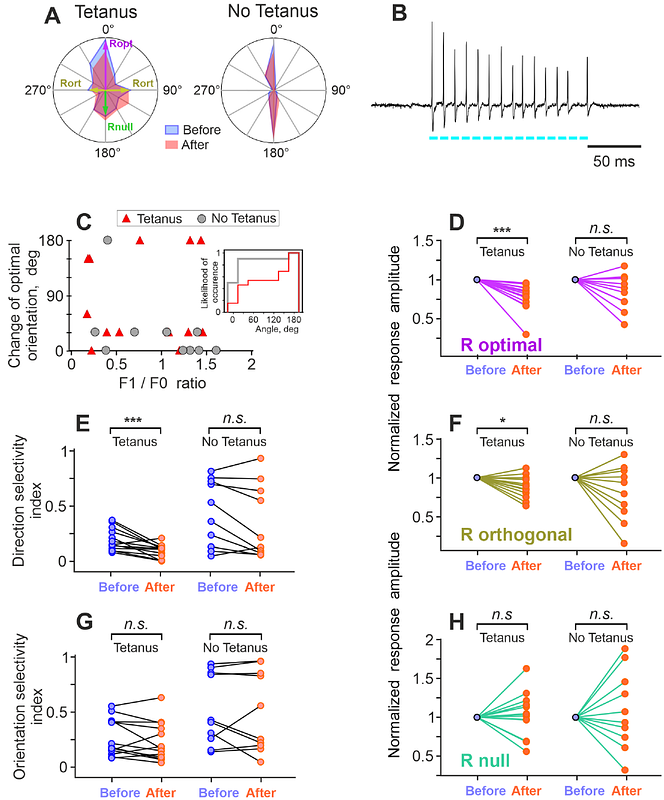PLASTICITY OF RESPONSE PROPERTIES OF MOUSE VISUAL CORTEX NEURONS INDUCED BY OPTOGENETIC TETANIZATION IN VIVO

PLASTICITY OF RESPONSE PROPERTIES OF MOUSE VISUAL CORTEX NEURONS INDUCED BY OPTOGENETIC TETANIZATION IN VIVO
Osipova, A. A.; Smirnov, I. V.; Smirnova, M. P.; Borodinova, A. A.; Volgushev, M. A.; Malyshev, A. Y.
AbstractHeterosynaptic plasticity, along with Hebbian homosynaptic plasticity, is an important mechanism ensuring stable operation of learning neuronal networks. However, whether heterosynaptic plasticity occurs in the whole brain in vivo, and what role(s) in brain function in vivo it could play, remains unclear. Here, we used an optogenetics approach to apply a model of intracellular tetanization, which was established and employed to study heterosynaptic plasticity in brain slices, to study plasticity of response properties of neurons in mouse visual cortex in vivo. We show that optogenetically evoked high-frequency bursts of action potentials (optogenetic tetanization) in principal neurons of the visual cortex induce long-term changes of responses to visual stimuli. Optogenetic tetanization had distinct effects on responses to different stimuli: responses to optimal and orthogonal orientations decreased, response to null direction did not change, and responses to oblique orientations increased. As a result, direction selectivity of the neurons decreased, and orientation tuning became broader. Since optogenetic tetanization was a purely postsynaptic protocol, applied in the absence of sensory stimulation, and thus without association of presynaptic activity with bursts of action potentials, the observed changes were mediated by mechanisms of heterosynaptic plasticity. We conclude that heterosynaptic plasticity can be induced in vivo and propose that it may play important homeostatic roles in operation of neural networks by helping to prevent runaway dynamics of responses to visual stimuli and to keep the tuning of neuronal responses within the range optimized for encoding of multiple features in population activity.